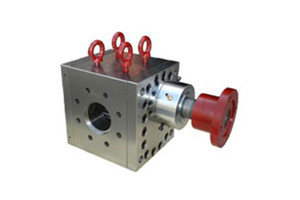The screw type pump is also very good for mixing plastic. The barrier screw, the Maddock mixer, and a host of other types all mix by subjecting the plastic to a shearing action.This is a form of so-called dispersive mixing. An example of this type of mixing is the classic demonstration in high school chemistry class, where the teacher demonstrates how to mix carbon particles into oil. He spreads the particles on a hard, smooth glass surface, pours oil over it alL and then bears down on the particles hard with a spatula to break them up and disperse them into the oil: dispersive mixing!
The screw is also good at so-called distributive mixing. This is the type of mixing done in the common kitchen mixer. It does not change the composition of the melt; it just ensures that every part of the mixture has the same components. More recently a third type of mixing screw has made its appearance. This is the so- called CRD mixer, which achieves its mixing through elongation and stretching of the plastic.lt turns out that this type of mixing is superior to either of the other two types pumps.
There are two things, however, that the screw type pump is not particularly good at - generating a constant pressure and delivering a constant throughput of plastic. The reason, of course,is that the screw type pump is not a constant displacement type pump. There is always an open channel between the input and the output when pumping plastic forward and the channelis always open for the plastic to flow backwards as well. An extruder can generate substantial pressure, of course. It does so because the plastic sticks to the barrel and slips on the screw. If it slips on both or sticks on both, we are in trouble.


But there are many factors that affect the degree to which plastic sticks on the barrel: The melt index and other characteristics of the plastic Whether virgin material or regrind is used.
The past history of the plastic, and above all.
The temperature of the barrel and of the plastic.
